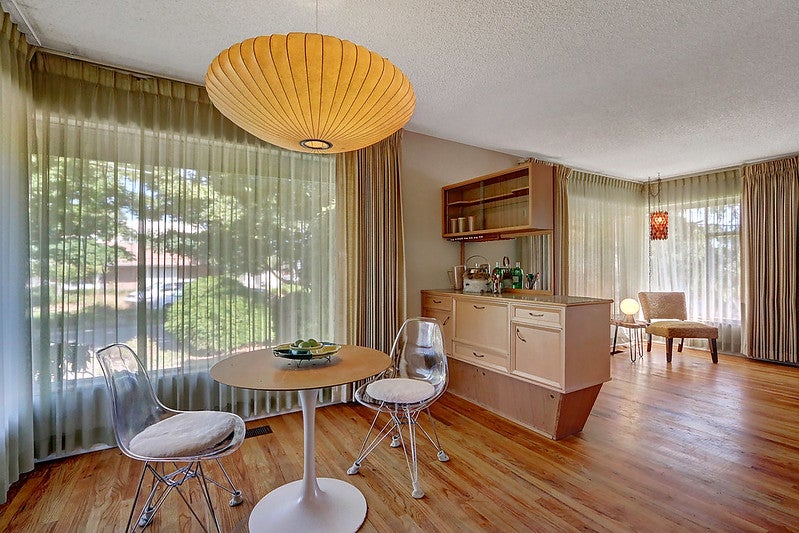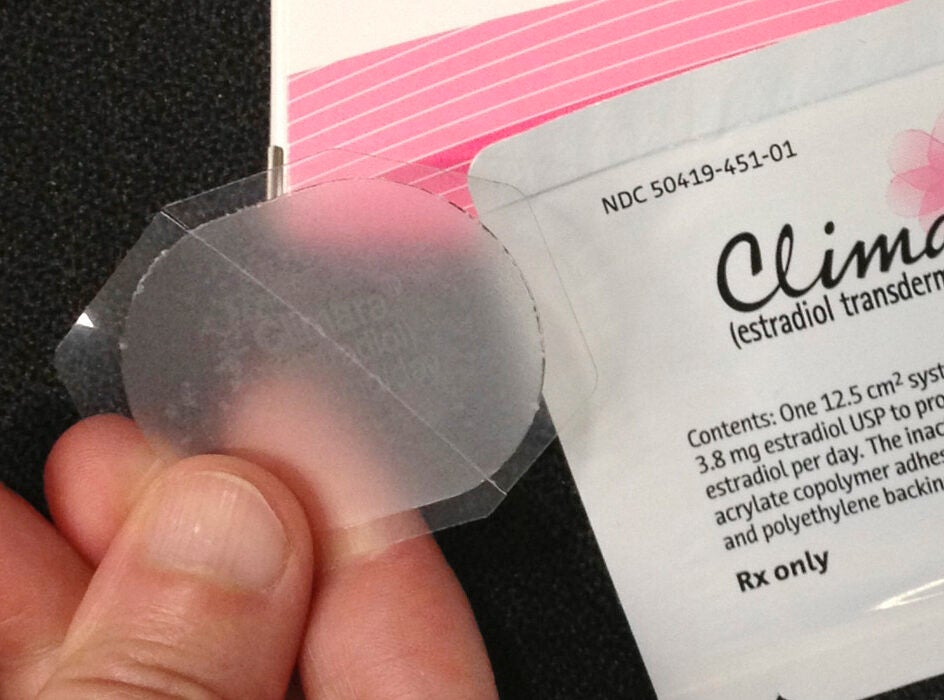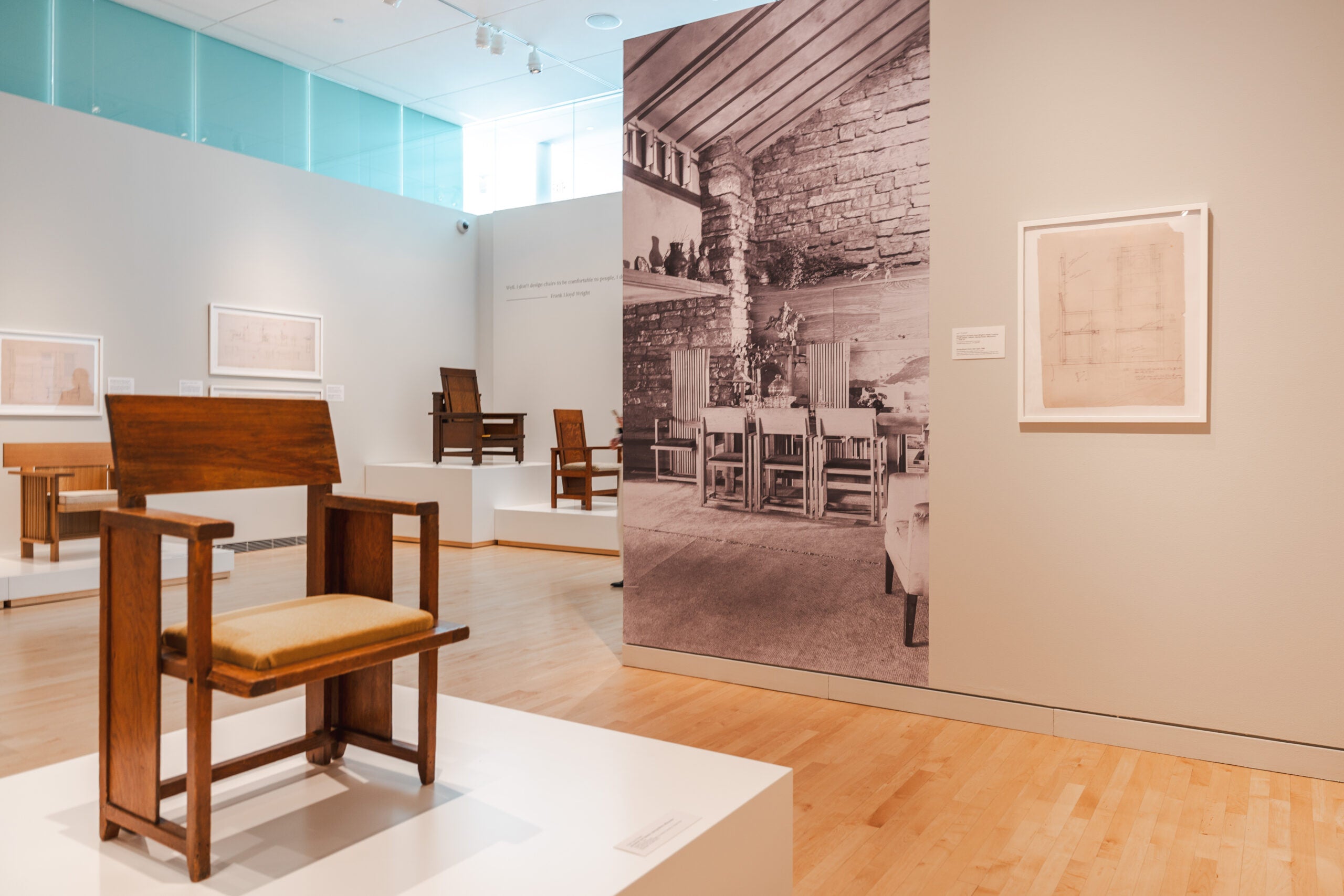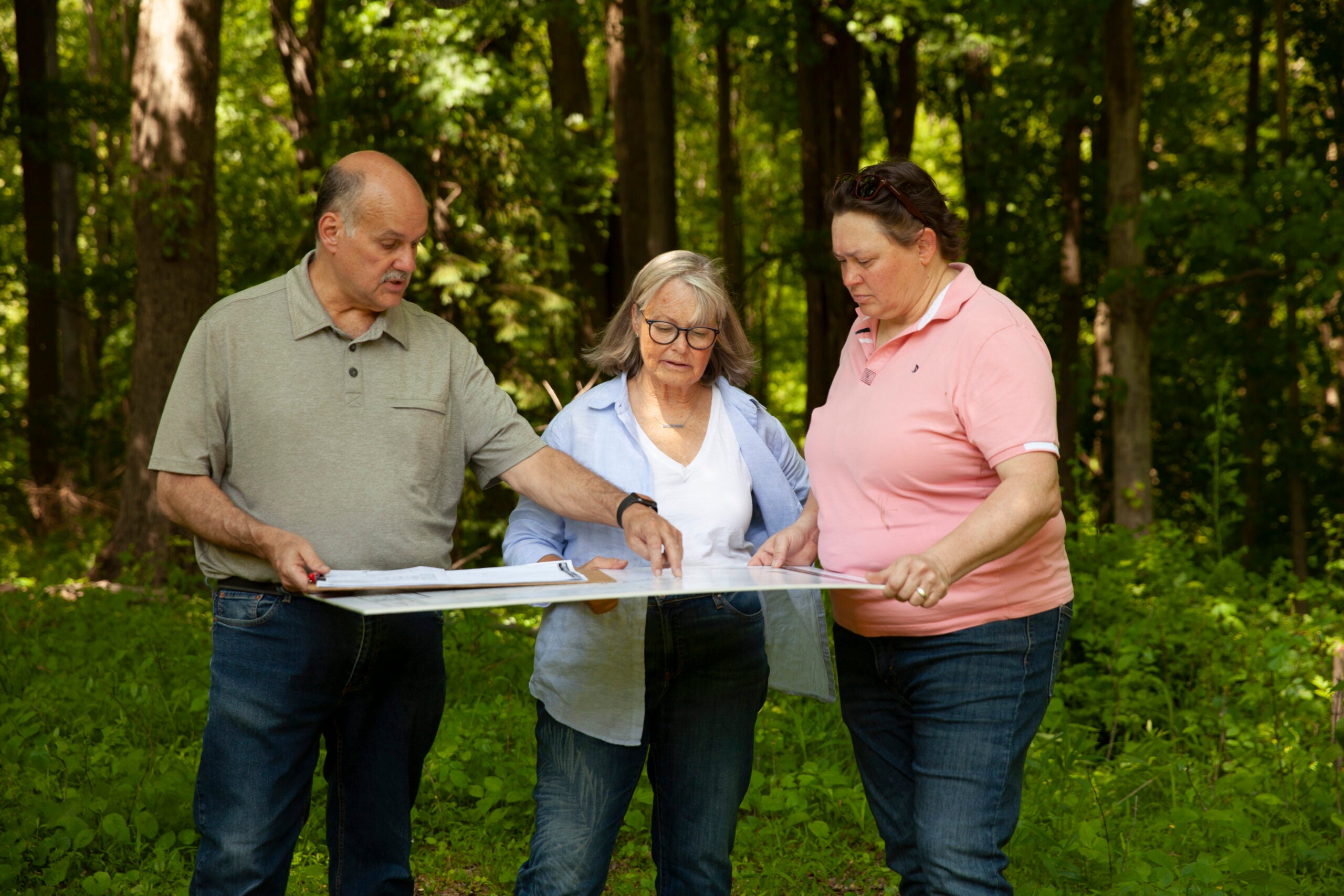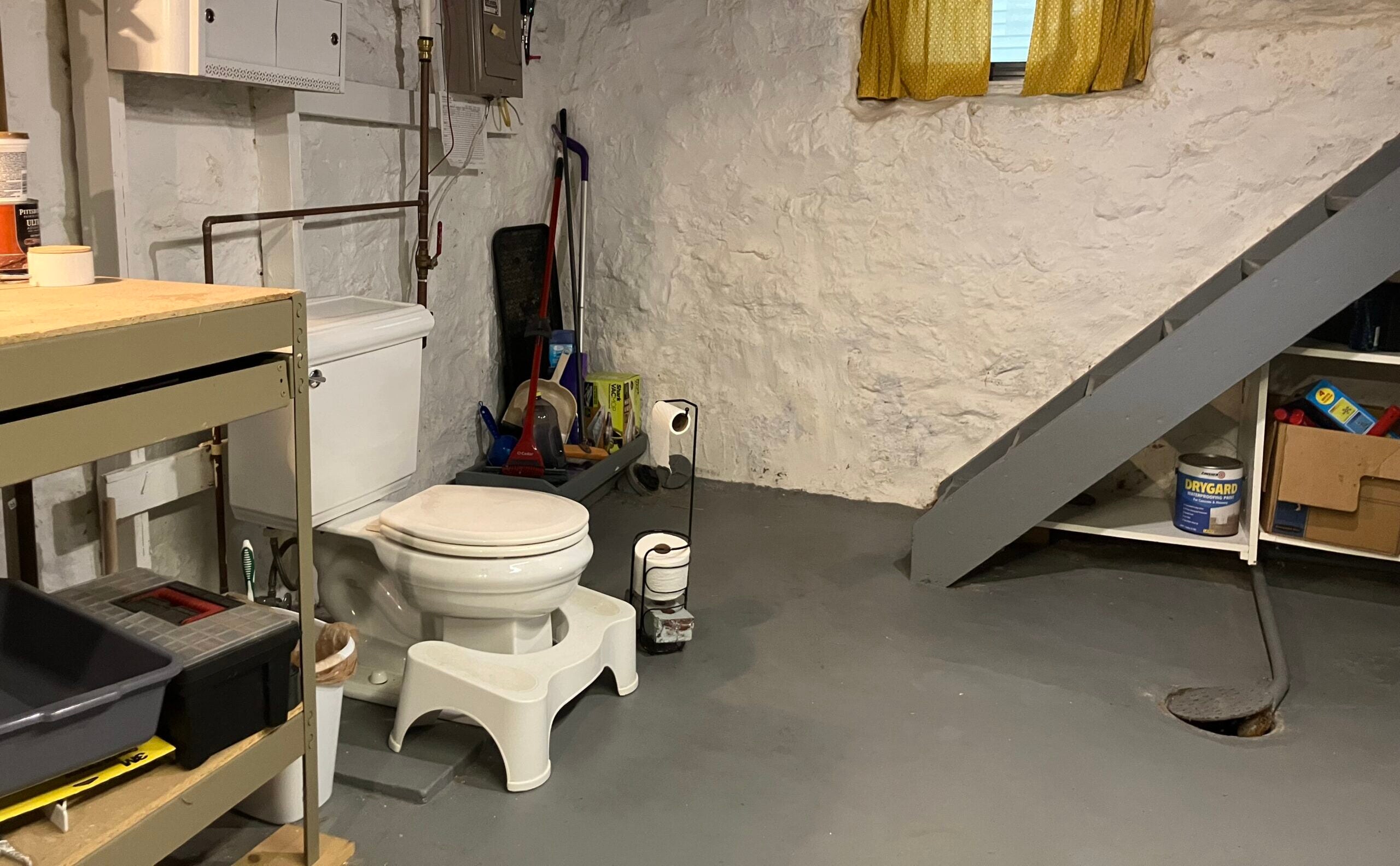As an architect based in Madison and steeped in mid-century modern design, Della Hansmann said she’s on a mission to save every ranch house in America from a mediocre remodel.
“I want people to love their homes. I want these homes to last, and mediocre doesn’t last. It gets torn out or replaced or sometimes torn down,” Hansmann said during an interview on “The Larry Meiller Show.”
There are 15 million mid-century ranches in America, according to Hansmann.
News with a little more humanity
WPR’s “Wisconsin Today” newsletter keeps you connected to the state you love without feeling overwhelmed. No paywall. No agenda. No corporate filter.
Even in the most modest mid-century house, details are to be savored, such as the use of simple shapes, easy flow between spaces, and connecting the outdoors and indoors through design elements such as matching exterior and interior brick.
Through her business, MidMod Midwest based in Madison, and in her podcast, Hansmann collaborates with owners to upgrade their mid-century modern spaces to accommodate modern living.
“What I like to think about doing is making choices for the house that are modern, that do suit our current lifestyles and tastes, but also are kind of things that would have made the original homeowners light up if they’d had access to them,” she said.
The following has been edited for clarity and brevity.
Mid-century houses were all about practicality because they came out of a crisis.
Della Hansmann
Jill Nadeau: We’ve heard of mid-century modern, but why don’t you define it for us? Because it can mean a lot of different styles, can’t it?
Della Hansmann: It’s always been kind of a broad tent. It’s a demarcation of a time period. So not really just one look or one style, but the style ideas that were floating around in architecture, in furniture design, in art, in music, from roughly World War II bordering into the ’70s, I would say.
And when I look at houses, which is obviously my primary mid-century obsession, I really think about the specific region or city that I’m talking about because each place had a different mid-century building boom.
So in Madison, it didn’t take off immediately after World War II, but certainly by the very late ’40s or by 1950, you’re starting to see a new kind of house going up as they answer the housing crisis they were experiencing then. And then it just rolls right through into the mid-’60s, very solidly here of a changing but a consistent style of buildings.
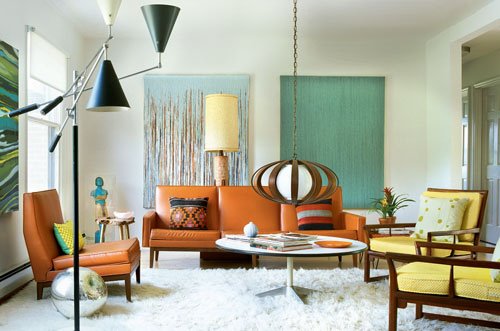
JN: What are some of the features of that particular style?
DH: Mid-century houses were all about practicality because they came out of a crisis. So they were meant to be — particularly the earlier ones, they’re quite small, they’re quite simple. They use unornamented to design. So no crown molding, no complicated cabinet doors. It’s like slab plywood fronts, simple clamshell or what’s often called ranch-based trim.
They’re building in plywood and brick and concrete and just starting on the idea of drywall. Although, if you if you live in an early mid-century house, you may notice that it’s hard to put nails into your walls. And that’s because they were using proto-drywall. But then the guys who were installing it were trained as plasterers, so they just used it like it was lathe and plaster and plastered another quarter inch of plaster right over the front of it.
So it’s an age of technological transformation. And really what I love about it is that we get this connection back to history, to organic materials, to craft, to building materials we don’t have access to anymore because we used them all up in that era.
But also there’s this freshness of, like, let’s try Formica, let’s try chrome, let’s try stainless steel. What’s easy, what’s low maintenance, what’s fun, what’s casual. So it fits really well with our current ethos of what we like in a house, and that’s nice.
JN: Why is MCM hanging on so much? Because trends usually don’t. So why is it so popular?
DH: Well, I think it’s trendy and not. I think it’s trendy because it’s the thing we’re doing in the moment. Although it’s not the only trend at the moment — I think much more common is the cottage style that’s being pitched by HGTV and has been for a while, although they’ve kind of come around and started using mid-century modern as a catchphrase.
I think there’s a certain resonance we always feel with our grandparents’ era. So if you go back to like the ’80s and ’90s, everyone was throwing back to a Victorian style of woodwork and built-in and kitchen cabinets and everything. And then we come a little bit further forward, and in the early 2000s, it was all cottage style, throwing back to like the 1930s and that grandparent era.
And roll a little further forward and now, I mean, I bought a house with the exact same front door as my grandparents’ house. My parents looked at it and said, “‘Yeah, it looks old.” And I was like, “It’s true.”
I have I have inculcated them into the movement now, but most of their peers think it’s nothing special because it’s just what they grew up with.
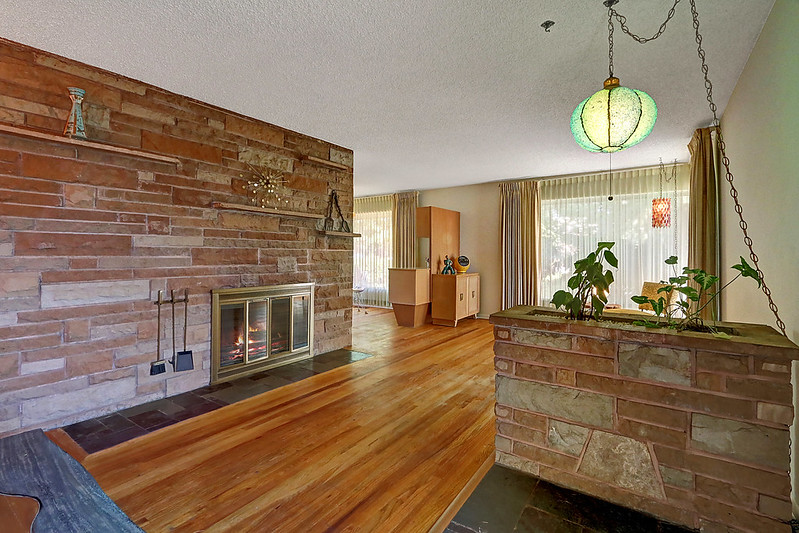
JN: What are some of the pluses of buying a mid-century modern home?
DH: Oh, they are manifold.
As a style of house, they’re so livable. They’re so close to how we want to live in a house today.
They have a casual floor plan. They’re not divided up into a bunch of little rooms. They’re really sturdy, and they’re close enough to our modern technology that they don’t have mysterious — like, you don’t have to deal with knob and tube wiring. You’re not trying to retrofit a lot of scary older things.
Although, mid-century homes are getting to a moment now when they could use some preventative maintenance to go forward for future decades. But it’s a familiar language of updates.
JN: What are some of the things that we should be concerned about if we’re looking at an MCM house?
DH: Some mid-century wiring can stand to be updated. And certainly when we upgrade a room entirely — like if you’re going to change your kitchen out, if you’re going to gut a kitchen, it won’t meet modern code anymore with the number of outlets and the placement of lights that it has. So you’ll be doing a lot more electrical wiring.
In any older home, mid-century or before, you’ve got to look out for hazards like asbestos and lead paint. And it’s nothing that can’t be addressed. But it is something that you want to be aware of and make your choices around.
And then there’s older furnaces, older heating systems, water systems. It’s also, though, when you need to make these upgrades, a chance to bring in some sustainable technology, to bring in something more energy efficient to switch out — maybe a whole house furnace for a zone system with a heat pump, or think about how you can reduce your air conditioning load by adding some shade trees and and having better indoor outdoor flow.
Every time we open up a wall over time — we’re making a hole taking off drywall — we’re adding insulation. The insulation from the mid-century period is proto. So it’s it’s not the best quality. We can do better now.
So there’s a bunch of things that you can do as you have to sort of hit a maintenance thing.
Wisconsin Public Radio, © Copyright 2026, Board of Regents of the University of Wisconsin System and Wisconsin Educational Communications Board.
